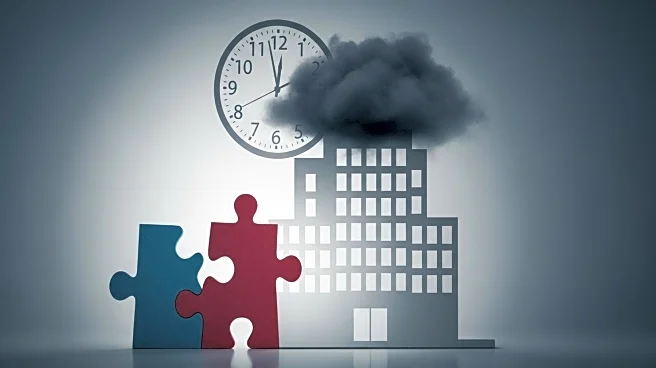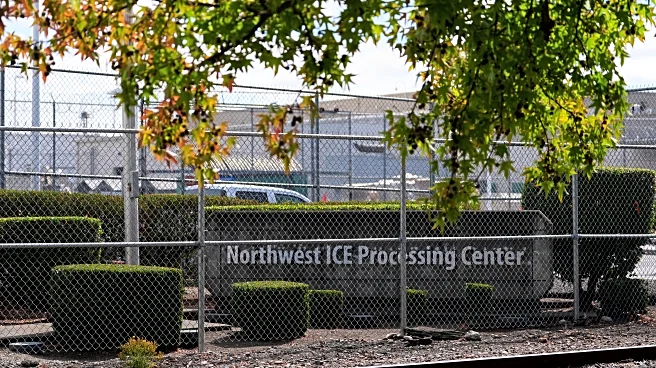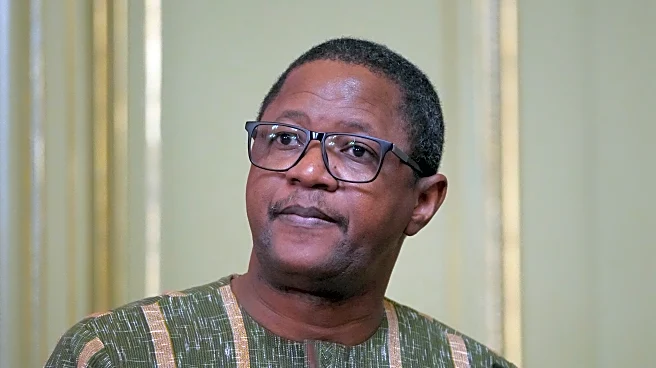What's Happening?
The Trump administration has reinstated approximately 700 CDC workers who were mistakenly issued layoff notices during the ongoing government shutdown. Initially, over 1,300 CDC employees were fired as part of broader cuts affecting seven federal agencies. The Department of Health and Human Services clarified that these workers were never officially separated from the agency. Despite this reinstatement, Vice-President JD Vance warned that further job cuts could occur if the shutdown continues. The shutdown began on October 1 after Democrats rejected a short-term funding bill, demanding the inclusion of federal health insurance subsidies. Essential workers, including federal law enforcement officers and air traffic controllers, are required to work without pay, while US service members have been prioritized for payment through redirected Department of Defense funds.
Why It's Important?
The reinstatement of CDC workers highlights the complexities and challenges of managing federal workforce reductions during a government shutdown. The potential for further layoffs underscores the impact on federal employees and the services they provide. The shutdown affects various government operations, including museums and research centers, which have already closed due to funding lapses. The political standoff over budget allocations, particularly concerning health insurance subsidies, reflects broader partisan divides that could have lasting implications for public policy and government functionality. The situation places pressure on lawmakers to resolve funding disputes to prevent further disruptions.
What's Next?
If the shutdown persists, additional federal workforce reductions may occur, affecting more employees and services. The ongoing budget negotiations will continue to be a focal point, with Democrats and Republicans at odds over health insurance subsidies. The Department of Defense's temporary funding measures for military personnel may need to be extended if the impasse is not resolved. Lawmakers face increasing pressure to reach a compromise to restore government operations and prevent further economic and social impacts.
Beyond the Headlines
The government shutdown and its associated workforce cuts raise ethical questions about the treatment of federal employees and the prioritization of essential services. The political maneuvering around budget allocations highlights the influence of partisan politics on public policy decisions. Long-term implications may include shifts in public trust in government institutions and the potential reevaluation of funding priorities in future budget negotiations.












